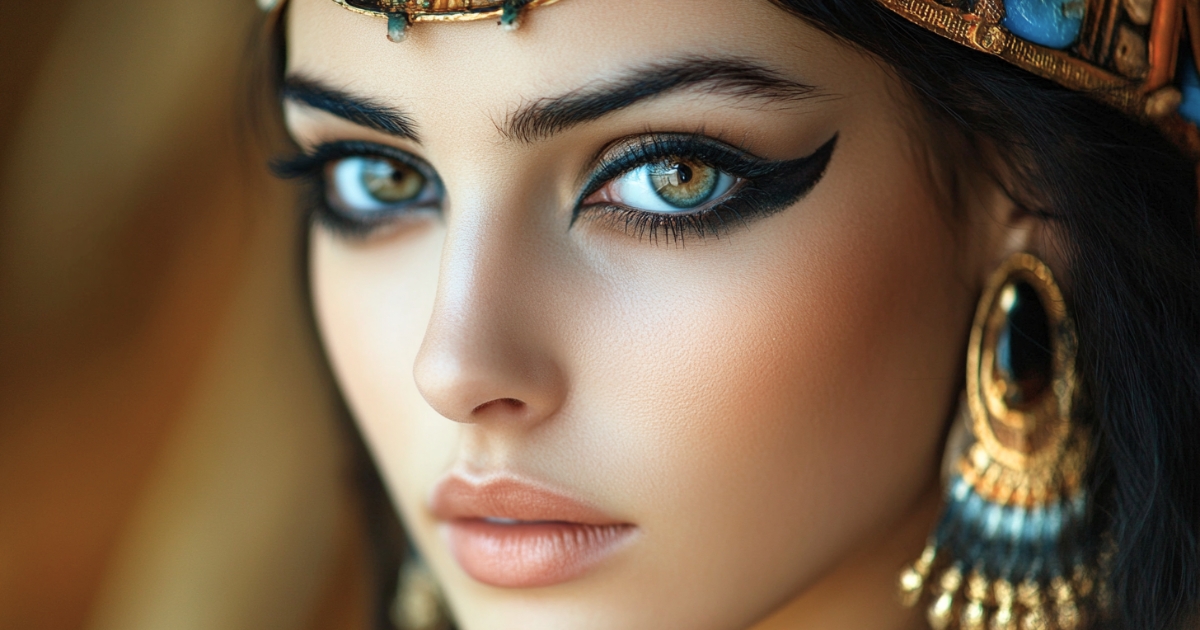Cleopatra VII, the last pharaoh of ancient Egypt, continues to captivate the world as a symbol of beauty and power millennia after her reign. However, Cleopatra’s beauty was more than skin deep. Her beauty regimen was a political weapon, blending ancient Egyptian traditions with innovative ideas.
This article explores Cleopatra’s beauty practices, examining their political and cultural significance. We’ll delve into ancient Egyptian cosmetics and techniques, Cleopatra’s unique beauty methods, and how she used beauty to assert power, implement diplomatic strategies, and influence future generations.
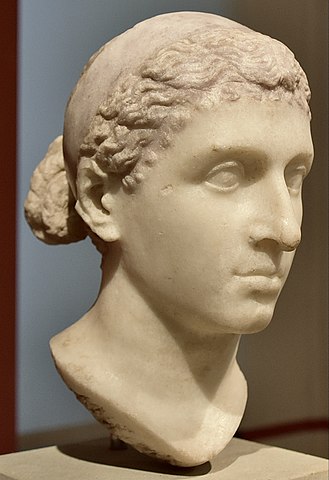
Bust of Cleopatra VII – Conveying the dignity of ancient Egypt’s last queen to modern times. Photo by Richard Mortel from Riyadh, Saudi Arabia, edited by Neoclassicism Enthusiast, CC BY 2.0, via Wikimedia Commons
Ancient Egyptian Beauty Culture
To understand Cleopatra’s beauty practices, we must first explore ancient Egyptian beauty culture. In ancient Egypt, makeup was not just about pursuing beauty; it held significant religious and social meaning.
For ancient Egyptians, makeup was a way to show respect to the gods and a symbol of social status. Both men and women commonly wore makeup, with particular emphasis on eye makeup. The famous eyeliner, known as “kohl,” was applied around the eyes in black, symbolizing the sun god Ra.
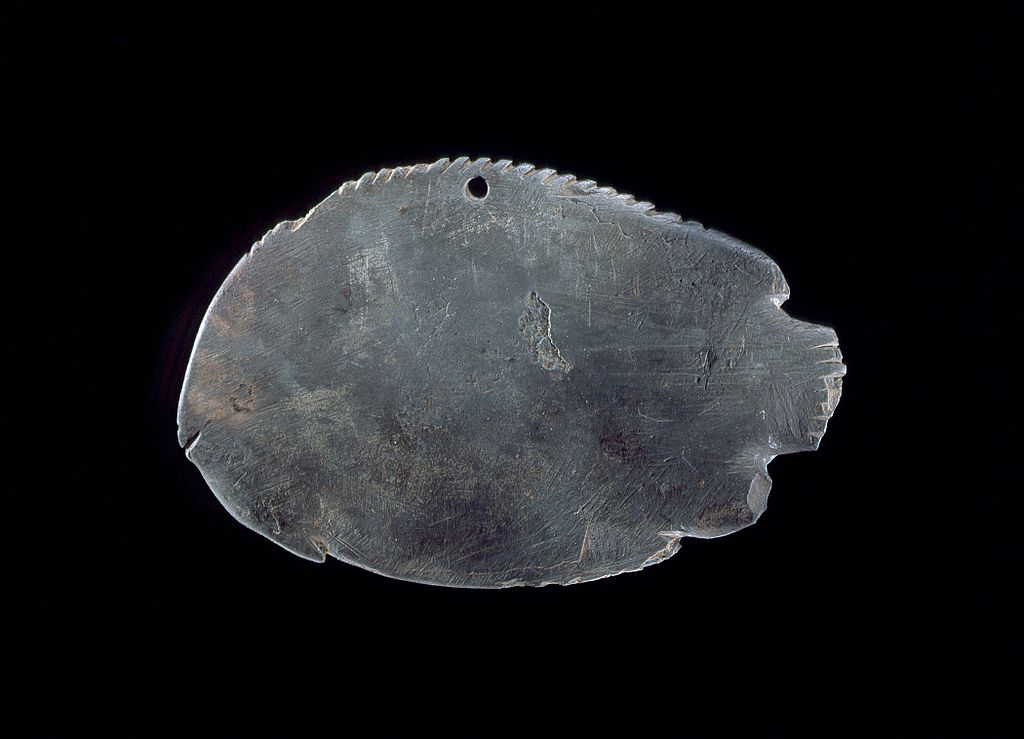
Fish-shaped ancient Egyptian makeup palette – A daily tool blending beauty and faith
Cosmetics were made from mineral, plant, and animal-based ingredients. For instance, eyeshadow was created from crushed minerals like malachite and lapis lazuli, while lipstick used red ochre (iron oxide). Lead carbonate was sometimes used for skin protection and whitening, though its toxicity raised concerns about long-term health effects.
Cleopatra’s Beauty Regimen
Cleopatra faithfully upheld ancient Egyptian beauty traditions while demonstrating exceptional skill in their application. Her beauty methods ingeniously combined the latest scientific knowledge with traditional wisdom.
Basic Skincare
Cleopatra reportedly maintained rigorous skincare routines for beautiful skin. Central to this was a mud pack therapy using Nile River mud, rich in minerals and organic matter, which purified and nourished the skin.
There are also anecdotes of Cleopatra bathing in milk daily. The lactic acid in milk acted as a natural exfoliant, smoothing the skin. Modern research confirms lactic acid’s moisturizing effects on the skin.
Makeup Techniques
Cleopatra’s makeup adhered to ancient Egyptian traditions while showcasing meticulous attention to detail.
Her eye makeup featured eyeshadow made from powdered malachite and kohl eyeliner. Kohl, made from antimony or galena (lead sulfide), was thickly applied around the eyes. This makeup not only had aesthetic appeal but also served the practical purpose of protecting the eyes from intense sunlight.
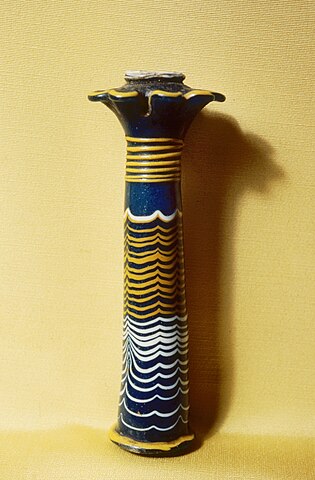
Ancient Egyptian kohl container and applicator – Tools Cleopatra might have used to enhance her eye allure
Red ochre (iron oxide) was used as blush on the cheeks, giving a healthy and vibrant impression.
Lipstick was made by mixing red pigment with wax extracted from carob beans. This lipstick was believed to have high moisturizing properties and long-lasting color.
Cleopatra was said to be skilled at utilizing these traditional makeup methods to highlight her features to their fullest potential.
Use of Fragrances
Cleopatra also cleverly utilized the power of scent. In ancient Egypt, fragrances were considered sacred and played important roles in religious rituals and daily life.
Cleopatra is said to have created her own perfumes by blending fragrances such as myrrh, frankincense, and cinnamon. These scents enhanced her presence and left a strong impression on those around her.
She also reportedly included massages with fragrant oils in her daily routine, which not only gave her skin a glow but also had relaxing effects on both body and mind.
The Politics of Beauty: Cleopatra’s Strategy
Cleopatra’s beauty regimen was not mere self-indulgence. It was a carefully calculated part of her political strategy.
Beauty as a Symbol of Power
In ancient Egypt, the pharaoh was considered an incarnation of the gods. Cleopatra used makeup to visually express this divine status. Her perfectly applied makeup emphasized her deification and inspired awe in her subjects.
The emphasized eye makeup, in particular, was seen as a symbol of the eye of Horus, visually demonstrating Cleopatra’s divine authority. This makeup allowed her to present herself not just as a beautiful woman, but as a ruler imbued with divine power.
Beauty and Intelligence in Diplomatic Strategy
Cleopatra’s diplomatic strategy relied heavily not only on her beauty but also on her exceptional intelligence and political acumen. She skillfully used her charm and intellect to build alliances that maintained Egypt’s independence.
Her relationships with Julius Caesar and Mark Antony are particularly famous. It’s said that Cleopatra took great care with her makeup and wore her finest fragrances when meeting them. However, it wasn’t just her outward beauty that captivated them.
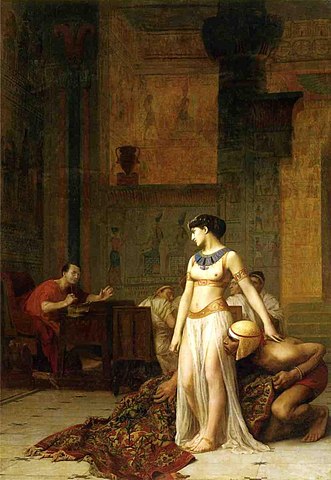
‘Cleopatra and Caesar’ by Jean-Léon Gérôme (1866) – Depicting Cleopatra’s diplomatic prowess using beauty and intelligence
Cleopatra was fluent in multiple languages and had deep knowledge of philosophy and science. In her dialogues with Caesar and Antony, she fully demonstrated her knowledge and insight, stimulating their intellectual curiosity. At the same time, she possessed sharp political instincts, skillfully navigating complex Roman political situations to secure the most advantageous position for Egypt.
This combination of intellect and political talent, along with her beauty, captivated the Roman leaders and enabled her to successfully form political alliances favorable to Egypt. Cleopatra’s diplomatic strategy was supported by a perfect balance of beauty and intelligence.
Beauty to Gain Popular Support
Cleopatra’s beauty regimen also functioned as a means to gain popular support. When appearing in public, she applied makeup according to traditional Egyptian beauty standards, visually demonstrating that she was Egypt’s legitimate ruler.
At the same time, she strived to be approachable to the common people. For instance, by publicly discussing beauty methods using relatively accessible materials like Nile mud packs and milk baths, she was able to reduce the distance between herself and the populace.
The Influence of Cleopatra’s Beauty Practices on Future Generations
Development of Cosmetics
Many of the cosmetics and beauty methods reportedly used by Cleopatra have influenced the modern cosmetics industry. For example, the mud pack therapy using Nile River mud can be seen as the prototype for modern clay masks. The concept of milk baths has led to the development of milk baths and skincare products containing lactic acid in modern times.
Revolution in Beauty Concepts
Cleopatra’s beauty is remembered by posterity not just as outward beauty, but as a “comprehensive beauty” that combined intelligence and power. This expanded the concept of beauty, providing a new perspective that linked women’s social status and abilities with beauty.
Influence as a Cultural Icon
Cleopatra’s beauty practices have been used as motifs in various cultural domains including art, literature, and film. Her eye makeup and image adorned with luxurious ornaments are widely recognized in modern times as synonymous with “ancient Egyptian beauty.”
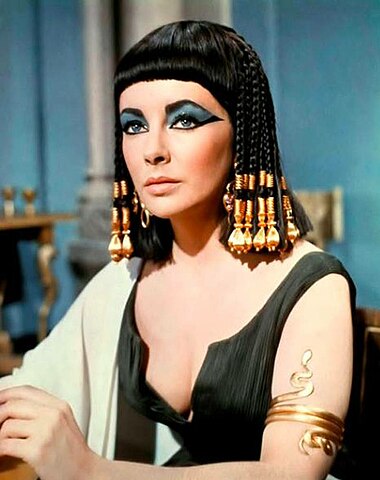
Elizabeth Taylor as Cleopatra in the 1963 film – Cleopatra’s beauty practices revived in modern times
Conclusion
Cleopatra’s beauty practices faithfully preserved ancient Egyptian traditions while demonstrating exceptional skill in their application. She cleverly utilized this traditional beauty culture to maximize her beauty and intelligence.
Her beauty and intelligence were symbols of power, diplomatic weapons, and strategies to gain popular support. Through makeup and intellect, Cleopatra skillfully controlled her image and became a powerful influence on the political stage of the ancient world.
The power of “beauty” demonstrated by Cleopatra was comprehensive, including not only outward beauty but also inner strength and the importance of intelligence. This concept continues to influence modern beauty industries and cultures, teaching us about the multifaceted nature of beauty.
